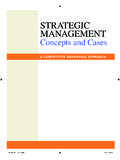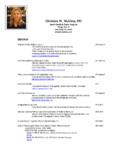Transcription of Community Inclusion for Adults with Autism
1 2010 Community Inclusion for Adults with Autism Guidance for Providers in Pennsylvania Eastern Region ASERT at lehigh university and Community Adult Autism Partnership Program at Devereux CARES Community Inclusion Manual 2 This document was developed through the Eastern Region Autism Service, Education, Research, and Training (ASERT) Center funded by a grant from the PA Department of Public Welfare s Bureau of Autism Services For further information please contact: Bureau of Autism Services PA Dept of Public Welfare Box 2675 Harrisburg, PA 17105 866-539-7689 Toll free Contributors: Eastern Region ASERT at lehigh university Clare Papay, , Project Assistant Linda Bambara, , Co-Principal Investigator Anastasia Kokina, , Project Assistant Catherine Kunsch, , Project Coordinator Erin McCurdy, , Project Assistant Christine Cole, , Co-Principal Investigator Devereux Pennsylvania Betsy Swope, , Director, Community Adult Autism Partnership Program Todd Harris, , Director, Division of Autism Services Brandee El-Attar, , Consultant, Devereux CARES Community Inclusion Manual 3 Acknowledgements This manual is a result of the collaborative efforts of Devereux Pennsylvania and Eastern Region ASERT at lehigh university .
2 In addition to numerous best practice resources identified throughout the manual, many of the practices described have been informed by the services and experiences provided by lehigh university s Transition and Assessment Services and Devereux CARES (Childhood Autism Research and Educational Services) and CAAPP ( Community Adult Autism Partnership Program). We gratefully acknowledge the many staff and individuals who were involved in developing these practices. Community Inclusion Manual 4 Table of Contents SECTION 1: OVERVIEW AND GUIDING PRINCIPLES .. 6 Introduction .. 6 Purpose and Target Audience .. 6 Guiding Principles .. 6 Characteristics and Needs of Adults with ASD .. 7 Organization of the Manual .. 8 Summary .. 9 SECTION 2: TYPES OF SERVICES.
3 11 Introduction .. 11 Funding Sources in Pennsylvania .. 11 Service Types .. 11 Enrolling as a 13 Summary .. 14 SECTION 3: GETTING STARTED .. 15 Introduction .. 15 General Description .. 15 How to Implement .. 16 Case Study .. 19 Summary .. 19 SECTION 4: GENERAL PROCESS FOR PROVIDING SERVICES .. 21 Introduction .. 21 General Description .. 21 How to Implement .. 21 Summary .. 26 SECTION 5: EMPLOYMENT SUPPORTS AND SERVICES .. 27 Introduction .. 27 Finding employment .. 27 General Description .. 27 How to Implement .. 30 Case Study .. 46 Checklist for Finding Employment .. 47 Supported employment .. 48 General Description .. 48 How to Implement .. 49 Case Study .. 53 Checklist for Supported Employment .. 53 Preparing for competitive employment.
4 55 General Description .. 55 How to Implement .. 56 Case Study .. 59 Checklist for Preparing for Employment .. 59 Summary .. 60 SECTION 6: Community Inclusion SUPPORTS AND SERVICES .. 61 Introduction .. 61 Community Inclusion Manual 5 General Description .. 61 How to Implement .. 62 Case Study .. 69 Checklist for Community Inclusion .. 69 Summary .. 71 SECTION 7: INSTRUCTIONAL STRATEGIES AND SUPPORTS .. 72 Introduction .. 72 General Description .. 72 How to Implement .. 73 A. Situational Assessment .. 73 B. Instructional Strategies .. 77 C. Instructional Supports .. 92 Summary .. 106 SECTION 8: OPERATIONAL ISSUES .. 108 Introduction .. 108 Summary .. 116 SECTION 9: PROGRAM EVALUATION .. 117 Summary .. 125 References .. 127 APPENDIX A: FUNDING SOURCES.
5 129 APPENDIX B: CHECKLISTS .. 134 APPENDIX C: FORMS .. 143 Community Inclusion Manual 6 SECTION 1: OVERVIEW AND GUIDING PRINCIPLES Introduction In this section we discuss the purpose and target audience for this manual. We provide an explanation of the principles that have guided our approach to supporting individuals with Autism spectrum disorders (ASD) to be involved in their communities and describe the characteristics and needs of individuals with ASD. Finally, we provide an overview of the organization of this manual. Purpose and Target Audience The purpose of this manual is to offer guidance for providing supports for persons with ASD to be involved in their communities and to work in inclusive settings. The manual is designed to be used by providers of services to individuals with ASD who are eligible and receiving services under the Adult Autism Waiver, Adult Community Autism Program (ACAP), OBRA Waiver, Person/Family Directed Support (P/FDS) Waiver, or Consolidated Waiver.
6 It is designed to address the needs of a wide range of individuals on the spectrum from individuals with significant support needs to individuals such as those with Asperger Syndrome who may require less pervasive supports. This manual does not address supports provided in facility-based work programs or segregated day programs. Families may also find the manual of interest when advocating for services or designing supports for their children with service providers. Guiding Principles The recommendations for supports provision made in this manual are based are the following ten guiding principles. 1. Supports and services are driven and guided by the individual and the family The individual is the primary decision-maker in selecting the types of services, hours of service provision, and specific aspects of supports provision.
7 It should always be assumed that the individual knows what is best for him or her. Families have an important role in helping to speak for the individual s needs and preferences. 2. Supports and services promote self-determination and self-advocacy Individuals are encouraged and supported to make their own decisions and advocate for themselves in Community settings. Community Inclusion Manual 7 3. Supports and services are individualized An individual is provided with a program that is based on an individual assessment of his or her interests, strengths, and needs. A program is designed for each individual rather than fitting him or her into an existing program. 4. Supports and services are provided to participate in every aspect of socio-cultural life All aspects of socio-cultural life (including, but not limited to, home, school, work, cultural and spiritual activities, leisure, travel and political life) should be considered when planning supports for Community Inclusion .
8 5. Supports and services are based on a philosophy of acceptance The goal of supports and services is not to cure a person of Autism , but rather to capitalize on the person s unique strengths and address the person s challenges in order to ensure Community participation and life satisfaction. 6. Supports and services are respectful and age-appropriate Not only should the supports and services be appropriate for Adults , but the manner in which supports are provided should exemplify a relationship characterized by dignity and respect. 7. Supports and services are designed to promote the full Inclusion of individuals in their communities The goal of services should be for individuals to become fully included in all aspects of their communities. To the greatest extent possible, activities should be non-segregated.
9 8. Supports and services promote independence and foster interdependence on naturally occurring supports in the individual s environments For individuals to become fully included in their communities, supports should become less artificial and interdependence on typical persons in Community settings should build. 9. Supports and services are culturally responsive Services acknowledge the cultural heritage of the individuals being served and are planned to take into account cultural preferences and experiences. 10. Supports and services are provided with integrity and quality Quality of services and progress toward goals are continually evaluated and changes are made when necessary. Periodic program evaluation is conducted to ensure all services are meeting the needs of individuals and exemplify current best practices.
10 Characteristics and Needs of Adults with ASD Autism is a pervasive developmental disorder characterized by difficulties in social skills, communication, and behavior. Five disorders fall under the umbrella of Autism Spectrum Disorders: Autism , Asperger Syndrome, pervasive developmental disorder- Community Inclusion Manual 8 not otherwise specified (PDD-NOS), Rett syndrome, and childhood disintegrative disorder (CDD). Individuals who fall on this spectrum have some common characteristics that impact their Inclusion in the Community : Social relationships: Individuals with ASD may experience difficulties relating to others and forming friendships. They may have difficulties in areas such as understanding the feelings of others, understanding nonverbal communication, and interacting with others.





